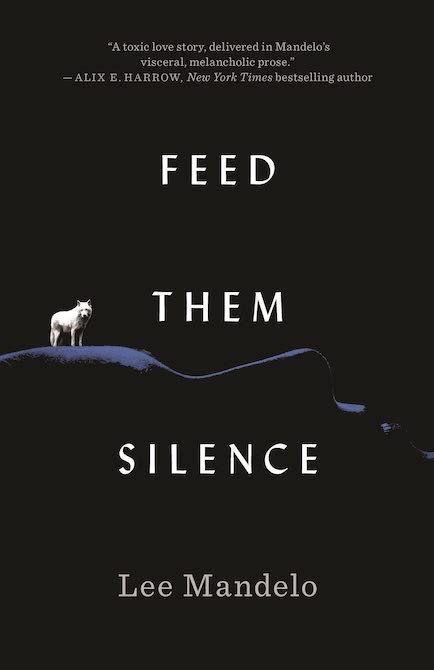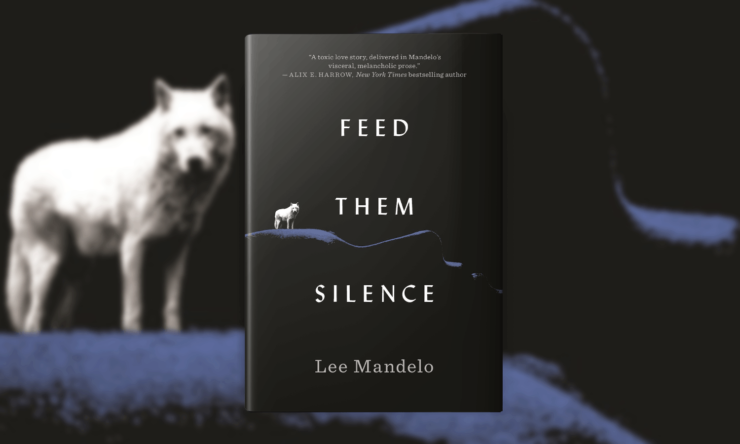“‘Hard’ sf is all about technology, and ‘soft’ sf doesn’t have any technology, right? And my books don’t have technology in them, because I am only interested in psychology and emotions and squashy stuff like that, right? Not right. […] Technology is the active human interface with the material world.”
― Ursula K. Le Guin, A Rant About “Technology”
The “science” that scaffolds our science fiction can come from so many unexpected places.
A core memory of January 2020, for me, is trudging through rock-salted slush toward the first meeting of a doctoral seminar on “Animals.” The course, which was cotaught by several professors gathered together from different humanities and sciences departments, explored how humans think and theorize about animals… and what it means to say we have “kinship” with the nonhuman world. Like, do we really? How do power and consent affect our relationships to other living creatures, and also to each other?
In hindsight, the timing was awfully exquisite. No one could’ve predicted that our final guest scholar, set to speak on microbial and viral life, would be forced to cancel due to COVID-19. As the lockdowns began, all those big questions about interdependence and animal intimacies abruptly gained some real heft. Reading about the ways that animals, plants, fungi, and microbes have so often been relegated to “the realm of zoe or ‘bare life,’ that which is killable” in scientific discourse—rather than being understood as “organisms whose lives and deaths are linked to human social worlds […whose] livelihoods shape and are shaped by political, economic, and cultural forces”—began to feel a lot like tuning onto a warning siren’s frequency.
Feed Them Silence, my forthcoming near-future sf novella, grew from that toxically fertile soil. But, as the opening quote for this essay suggests, the hi-tech machine that allows Sean to neurologically interface with her wolf subject is not where the beating heart of the novella resides… because the research path I stumbled down, trapped for months in a dingy studio apartment with only plants for company, wasn’t about animal cognition or neuroscience at all. It was, instead, a mixture of what anthropologists call multispecies ethnography combined with the theoretical works of Donna J. Haraway, Christine Marran, and other philosophers of science/culture on “speculative fabulation, science fiction, science fact, speculative feminism, and soin de ficelles [care of/for the threads].”
Those weird, wonderful studies and the ideas they provoked formed the backbone of the novella: how, despite the assistance of technology, Sean’s inability to connect—her failure to “become-with” other beings, human and nonhuman alike—ends up wreaking havoc on her research, her life, and ultimately the very wolf pack she’d intended to help.
***
So, what does “being in kind” with animals even mean?
Multispecies ethnography asks humans to study and exist alongside animals differently. While I won’t bore everyone summarizing the debates about what constitutes empiricism, research, and interpretation across the sciences and humanities in global North academia… suffice to say, the presumed dualistic split between humans and animals has come under question—as has the strict binary of nature versus culture. Donna J. Haraway proposed the wriggly, undefined term “naturecultural” to encompass how it’s never really a question of “nature or nurture” but always/already a yes, and. Basically, you can’t have one without the other, because no one exists in either a social vacuum or without physical form. Even artificial intelligences are created and programmed by people whose sociocultural beliefs shape what the technology ends up doing.
The practice of multispecies ethnography enters, then, onto “contact zones […] where encounters between Homo sapiens and other beings generate mutual ecologies.” For example, consider the axolotl—native to the canals of Xochimilco and near extinction in a habitat actively being destroyed, but with one breed simultaneously being kept alive globally in research labs. Or, the controversial ethics of ‘care’ in culling more than two thousand goats on the Galapagos Islands to save an endemic species of tortoise. Ideas about ecological interdependence are, of course, only new to some people in some places. Scholarship by and from Indigenous communities, like on how the Inuvialuit of Paulatuuq employ “‘fish pluralities’ (multiple ways of knowing and defining fish)” to negotiate pressures on the environment, humans, and animals, demonstrates as much. These studies all explore what happens when human and nonhuman animals meet, share space, and sometimes do one another harm.
Underlying ethnographic research on naturecultural interdependence, though, are some big philosophical questions on the beliefs and practices of modern science regarding “animals.” And that, for me, is when the real fun begins.
In her book When Species Meet, Haraway argues that “animals are not just ‘good to think’ (as Levi-Strauss had it), or more instrumentally, ‘good to eat’ (as Marvin Harris countered), but were also entities, and agents, ‘to live with.'” Or, as more grimly argued by Christine Marran in Ecology Without Culture: Aesthetics for a Toxic World, “the vulnerable are a diverse population of humans and creatures enduring […] industrial modernity’s ‘cannibalistic civilization,’ which destroys itself through its cycles of excessive production and consumption.” In short, they’re concerned with what it means for all creatures to “become-with” one another, to be inextricably kin: creatures whose continued existence is thereby shared “in kind.”
Though their arguments sometimes differ, both Haraway and Marran as theorists of science/culture focus on relationships: the intimacies and life-worlds shared between human and nonhuman animals… for better or for worse. On that note, I don’t think it’s an accident that they both extensively reference the works of Ursula K. Le Guin—and so reading their work also means coming back, full circle, to sf built on those supposedly “soft” sciences. Haraway writes, “Le Guin taught me the carrier bag theory of storytelling and of naturalcultural history. Her theories, her stories, are capacious bags for collecting, carrying, and telling the stuff of living.” Marran devotes an entire chapter of her book to Le Guin’s “obligate storytelling […which] emphasizes the bond, the fetter, the bowline, the ligare, of one being to another as the level of care and substance, of thought and matter.” Humans aren’t somehow above nature; we’re constantly permeated by toxins, by attachments, by culture, by nourishment.
Within the science fiction they utilize for imagining other futures, and their own speculative theorizations, Haraway and Marran both forward strategies for humans to create a more ethical world—a survivable world. But doing so requires relinquishing fantasies of supremacy, and of domination, to instead “be in kind” with one another, with the flora and fauna, with the air and soil and water that provides us life.
***
The trouble is, intimacy and ethics are both terribly complicated. Power always worms its way into our relationships, and sometimes “becoming with” is easier said than done.
While all these stories and studies and speculations circulated in the back of my brain, disorganized but starting to produce friction-warmth, I happened upon an interview with Haraway that provided the final spark. Asked if she ever got to know what her beloved dog Cayenne was really thinking, to feel her subjective experience, Haraway answered,
“No, I certainly don’t think I ever reached any seriously deep understanding, although I knew more than I did before. [… The] fantasy of full knowledge is a violent fantasy. […] It’s a possession of self and other. I think it’s a lust for oneness. Of course, we wish we could know, if only for a minute, what makes the one we love really tick. But very quickly, particularly in the cultures I come from, it becomes a fantasy of perfect communication. […] It leads us to violence against the other because the other remains other.”
Haraway concludes gently that “the appreciation of not knowing, and letting that be, is something you learn in a serious relationship. It’s a kind of letting go. Not knowing and being with each other not knowing.” Rather than carrying on the individualistic “human exceptionalism” that has driven colonization, climate destruction, and the stratified violences of capitalism, Haraway envisions a future “made up of ongoing multispecies stories and practices of becoming-with,” one which requires radical shifts in how people think about nature.
Buy the Book


Feed Them Silence
She rejects the fantasy of getting inside her animal companion’s brain… but what would someone else do, someone whose ethics differed significantly, if that fantasy became a possibility?
Right then and there, the central conflict of Feed Them Silence blossomed. It’s exactly the mutuality and reciprocity required to “be in kind” with other living creatures—as opposed to pursing possession of them—that Sean fails at over and over again. She refuses to be honest about the costs of “imposing [herself] on the other, thinking [she] knew when [she] didn’t, not paying enough attention to know when [she] could have.” As the protagonist, Sean models one common scientific approach to engaging with nonhuman animals—an approach that falls terribly short, and drags the audience down with her. She’s changed by her experiences, physically and psychically, but she never quite manages “being in kind” with the creatures she touches and is touched by.
And so she loses the animal intimacies she was so desperately reaching for.
Why orient a novella around failure, though? One answer is, because science fiction warns us as often as it thrills us, and in the dire spring of that year it felt as if we needed to sound some alarms. On the craft level, all this neat research gets digested then metabolized into themes, conflicts, and plot elements; it serves alternately as inspiration, as provocation, and as the sturdy hidden bones beneath the flesh and blood of the story. While there are no footnotes or citations in Feed Them Silence, as outlines and drafts came together, I regularly paged through my original notes to remind myself of the themes and arguments I’d intended to explore… as well as how primal, how frightful, our fears and desires around really connecting to one another can be.
Ultimately, Feed Them Silence—as well as this essay on the science(s) and speculation(s) that inspired it!—invites readers to “stay with the trouble.” I hope we all continue wrestling through these messy ethical quandaries around nature and culture, human and nonhuman life-worlds, and the relationships that form between and among them. After all, the future continually arrives on our doorstep. If sci-fi as a genre does anything it’s prompt us to ask: how could we make that future better?
“Nothing is connected to everything; everything is connected to something. […] We are at stake to each other.”
― Donna J. Haraway, Staying with the Trouble: Making Kin in the Chthulucene
Lee Mandelo (he/they) is a writer, critic, and occasional editor whose fields of interest include speculative and queer fiction–especially where the two coincide. Summer Sons, their spooky gay debut novel, was recently published by Tordotcom, with other stories featuring in magazines like Uncanny and Nightmare. Aside from a brief stint overseas, Lee has spent their life ranging across Kentucky, currently living in Lexington and pursuing a PhD in Gender Studies at the University of Kentucky.










